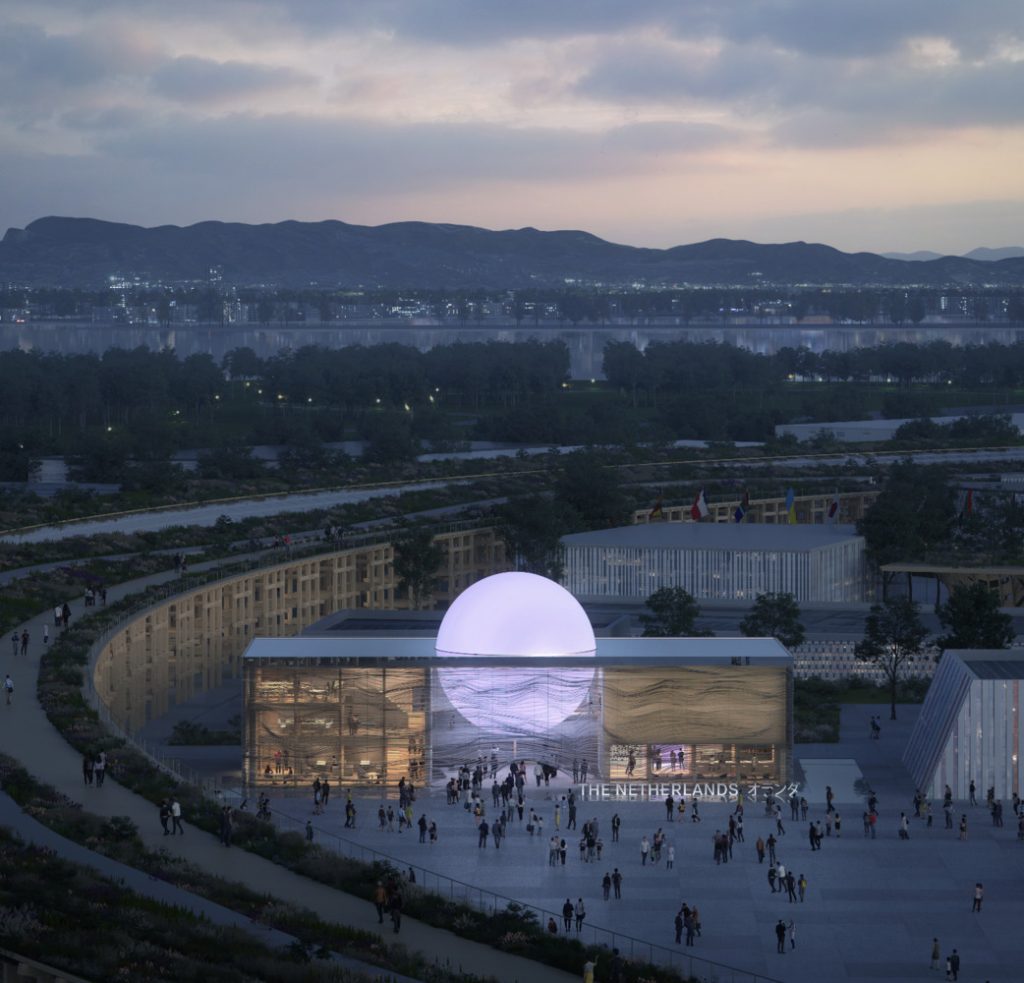The Kingdom of the Netherlands has recently unveiled the theme and design of its Pavilion for Expo 2025 Osaka, Kansai, Japan, in a presentation held in Osaka City. The pavilion’s theme, “Common Ground: Creating a New Dawn Together,” emphasizes the Netherlands’ dedication to fostering mutual understanding to address global challenges. Designed by RAU Architects, the pavilion’s circular design features a prominent illuminated sphere at its center, symbolizing a new era of unlimited clean energy, akin to a “man-made sun” signaling a future powered by sustainable resources.
The pavilion is designed as a fully circular structure featuring an anthropogenic (“man-made”) sun at its center. This design symbolizes a new era of clean, unlimited, and accessible energy, reflecting the rising sun’s promise of a future empowered by collaboration. Visitors will be introduced to new technologies focused on harnessing the boundless energy of water, underscoring the pavilion’s role in promoting advancements in energy transition.
The Pavilion’s emphasis extends beyond showcasing technologies to addressing how clean and renewable energy can vastly improve quality of life. By facilitating sustainable innovations, the pavilion aims to tackle critical issues such as climate change, food security, and global health. The ability to develop solutions that save lives and enhance well-being highlights the pivotal role of clean energy in shaping a more resilient and prosperous future.
The Netherlands pavilion also confronts the significant challenges of the energy transition. It acknowledges the urgent need to address raw material scarcity and reduce reliance on fossil fuels. By focusing on renewable resources like wind, sun, and water, the Pavilion promotes a transition to sustainable energy systems that minimize environmental impact. This approach reinforces the Netherlands’ dedication to innovation, circular design, and a sustainable future for all.
The Netherlands Pavilion said, “We humans are guests on earth. Our planet is a closed system, nothing more is added. Everything that does not grow is limited, which is why we are confronted with the finiteness of our fossil energy sources and material supply. How could we make the finite infinite?
Source: archdaily.com





